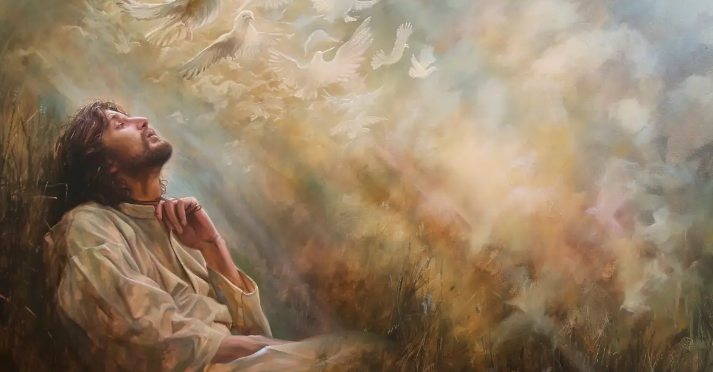Introduction to Christian Art
Christian art is a vibrant tapestry woven through centuries of faith, reflection, and creativity. It invites us to explore the divine while expressing our innermost thoughts and feelings. Whether you’re an experienced artist or someone who has never picked up a paintbrush, there’s something magical about creating art that reflects your beliefs.
The beauty of Christian art lies not only in its aesthetic appeal but also in its ability to nurture spirituality and inspire connection with God. From intricate paintings to simple sketches, every piece tells a story—a story that speaks to the heart. Join us on this journey as we delve into the world of Christian art, uncovering its history, themes, techniques, and how you can tap into your inner artist. Let’s embark on this creative adventure together!
The History and Significance of Christian Art
Christian art has deep roots that intertwine with the very beginnings of Christianity. Its journey began in the catacombs of Rome, where early Christians expressed their faith through simple symbols and frescoes. These clandestine artworks were essential for worship and community bonding during times of persecution.
As Christianity grew, so did its artistic expression. The Byzantine era brought rich mosaics and gold leaf, illuminating churches while conveying divine stories. This period marked a transition from modest imagery to intricate storytelling within sacred spaces.
The Renaissance further transformed Christian art by infusing humanism into religious themes. Artists like Michelangelo and Raphael created masterpieces that not only depicted biblical narratives but also explored humanity’s relationship with God.
Each brushstroke tells a story—one that resonates across centuries. The significance lies not just in aesthetics but in the profound spiritual connections these works foster among believers today.
How Christian Art Can Nurture Your Faith
Christian art serves as a visual language that speaks to the soul. It captures profound truths and mysteries of faith in ways words often cannot.
When you engage with Christian art, it can evoke deep emotions and reflections. A beautifully painted scene of the Nativity or a striking image of Christ on the cross invites contemplation. These works remind believers of foundational themes like love, sacrifice, and redemption.
Creating or appreciating this type of art can also foster connection with God. As you meditate on each brushstroke or detail, your thoughts can drift into prayerful dialogue.
Moreover, visiting galleries filled with Christian masterpieces allows communal experiences that deepen collective faith. Sharing these moments with others nurtures bonds over shared beliefs and inspires conversations about spirituality.
Christian art enriches personal journeys by illuminating paths towards divine understanding and inspiration.
Common Themes in Christian Art
Christian art is rich with profound themes that reflect the beliefs and stories of faith. One prevalent theme is redemption, often illustrated through scenes depicting Christ’s sacrifice and resurrection. These images remind viewers of hope and salvation.
Another significant theme is love, represented by the compassionate acts of Jesus. Artists frequently capture moments like the Good Samaritan or Christ embracing children, emphasizing unconditional love.
The concept of light versus darkness also plays a crucial role in Christian art. Light symbolizes divine presence and truth, while darkness often represents sin or despair. This contrast creates powerful visuals that resonate deeply with believers.
Community and fellowship are celebrated through depictions of gatherings such as The Last Supper or communal worship scenes. These works highlight the importance of unity among believers in their spiritual journeys. Each theme enriches our understanding of faith through artistic expression.
Techniques and Mediums Used in Christian Art
Christian art has a rich tapestry of techniques and mediums that have evolved over centuries. Each method reflects the spiritual depth and cultural context of its time.
Painting is perhaps the most recognized form, with oil paints allowing for vibrant colors and intricate details. Iconography often employs egg tempera, which creates a luminous quality in religious images.
Sculpture also plays a vital role, from grand cathedrals adorned with stone carvings to small wooden figures used in personal devotion. The tactile nature of sculpture invites deeper contemplation.
Mosaic artwork dazzles with colorful fragments, telling stories through patterns made from glass or stone. This technique can be found in many historic churches.
Textile arts like embroidery offer another medium for expressing faith visually. Quilts featuring biblical scenes are common in various Christian communities, blending craftsmanship with spirituality.
Each technique offers unique opportunities to connect creatively while honoring one’s beliefs.
Steps to Creating Your Own Christian Art Piece
Creating your own Christian art piece can be a fulfilling journey. Start by gathering inspiration from scripture, nature, or existing artworks that resonate with your faith.
Next, choose a medium that speaks to you—whether it’s painting, drawing, or digital design. Each medium has its unique qualities and techniques.
Sketch out your ideas first. This will help you visualize the message you want to convey through your artwork.
Once you’re happy with the sketch, bring it to life using colors and textures that reflect spiritual themes. Don’t hesitate to experiment; sometimes unexpected choices lead to beautiful results.
As you work, pray or meditate on the meaning behind your piece. Allow this process to deepen both your creativity and faith connection.
Display your finished artwork in a space where it can inspire others as well as yourself.
The Impact of Christian Art on Society
Christian art has profoundly influenced society throughout history. It has shaped cultural narratives, inspired movements, and offered a visual language for faith.
From the ornate cathedrals of Europe to humble church murals, Christian art invites contemplation. It encourages viewers to explore their spirituality and connect with deeper truths.
This form of expression often transcends religious boundaries. Many find inspiration in its themes of love, sacrifice, and redemption. These universal messages resonate with people from diverse backgrounds.
Moreover, Christian art promotes community engagement. Art exhibits and workshops foster connections among individuals who share similar beliefs or seek spiritual growth.
In contemporary times, digital platforms broaden the reach of Christian artists. Their work can spark conversations globally about faith’s role in modern life while inspiring new generations to create meaningful expressions of belief.
Conclusion
Christian art serves as a powerful tool for expression and faith. It invites believers to explore their spirituality through creativity. By understanding its history, themes, and techniques, anyone can engage with this enriching form of art.
Creating your own Christian artwork offers a personal journey into the depths of belief and inspiration. The act of making art can deepen connections to faith while allowing individual experiences to shine through.
As you delve further into the world of Christian art, remember that it is not just about creating pieces for display—it’s about cultivating an inner dialogue with your beliefs and sharing that message in a unique way. Whether you are an experienced artist or just beginning your creative journey, there is room for everyone in this vibrant realm.
The legacy of Christian art continues to influence culture today, reminding us all of its timeless significance. Embrace the opportunity to explore these rich traditions and express your faith creatively; it could lead you on a profound path toward self-discovery and spiritual growth.




















